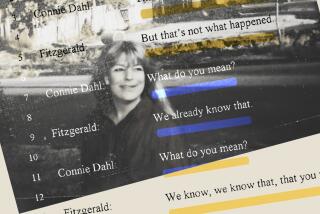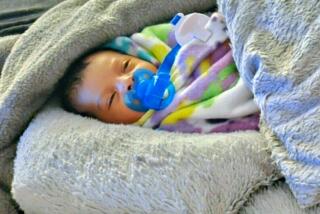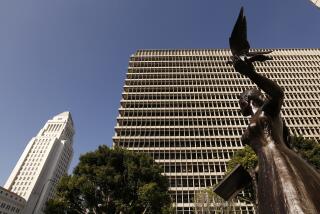Testimony Sheds Little Light on Child’s Death : Courts: Closing arguments are heard in the case of a Palmdale man accused of killing his goddaughter.
- Share via
After eight weeks of often conflicting--and at times lurid--testimony in the trial of a Palmdale man charged with sexually molesting and killing his 17-month-old goddaughter, little of how the child was injured is known.
There were no witnesses to the beating, and the trial has included conflicting testimony over such basics as who was present at the time of the attack. The trial has been marked by stories of affairs, charges and countercharges among the defendant and witnesses and testy exchanges between the prosecutor and defense attorneys.
The prosecutor has even argued with members of the victim’s family.
In closing remarks Wednesday, attorneys for the defendant, Ricky Lee Earp, 29, maintained that their client is innocent, and that detectives botched the investigation because they failed to look for any other suspects.
But Deputy Dist. Atty. Robert Foltz said investigators did not need to look for other suspects because Earp was the only person present on Aug. 25, 1988, the day that the child, Amanda Nicole Dorshier, was raped, sodomized and beaten. The child died two days later in the hospital.
The case is expected to go to the San Fernando Superior Court jury today after receiving instructions from Judge Ronald S. Coen. Earp faces the death penalty.
As the trial progressed, tempers often flared between Foltz and defense attorneys Louis H. Bernstein and Adrienne S. Dell.
Early in the trial, the victim’s mother, Cindy Dorshier, who testified for the defense, said Foltz had told her that he knew Earp had abused the child because Earp’s semen had been found on the girl. Foltz, incensed that his credibility was under attack, denied making the statement and said, “No more Mr. Nice Guy.”
Later in the trial, Foltz attacked Bernstein and Dell, saying they tried to persuade a defense witness to lie on the stand. Foltz said the witness, Dennis Morgan, had been asked to testify that he was in Earp’s home the day the child was hurt and that a third man had committed the crime.
Morgan backed Foltz’s accusations and instead testified that he was not present when the beating occurred.
Both Bernstein and Dell denied asking Morgan to fabricate any story. In fact, the attorneys said Morgan molested and killed the child, and made his accusations to avoid prosecution.
Morgan, an admitted drug addict who has been in and out of jail most of his adult life, said Earp had affairs with both the victim’s grandmother, Diane Ellison, and the child’s mother, Cindy Dorshier.
Foltz said that Ellison and Dorshier had not cooperated in the investigation, perhaps because of their past relationships with Earp.
Morgan, who met Earp in prison in 1985, even testified that he had an affair with Earp and that Ellison had once considered having Earp killed because of the alleged affair with her daughter.
Ellison, meanwhile, denied having any sexual relationship with Earp or of considering having him killed. Instead, she accused Foltz of mishandling the case and of harassing family members. Ellison said she was also appalled that the judge would often joke with jurors before the start of proceedings.
At one point in the trial, the judge told Ellison that she could not be in the courtroom during the testimony of a witness. Ellison stormed out, slamming the door behind her. The judge ordered a bailiff to bring Ellison back into the courtroom and angrily warned her that he would find her in contempt of court if she ever did that again.
The only point that all sides seem to agree on is that Earp’s girlfriend, Virginia MacNair, left for work on the morning of Aug. 25, 1988, leaving him alone to care for Amanda. Later that day, Earp called MacNair at work to tell her that Amanda was not breathing. She told him to call paramedics, and that she would meet him at the hospital.
After that, the stories differ.
Earp contends that after paramedics took the girl to the hospital he left the scene because he was afraid of being arrested for violating parole in connection with a 1985 burglary conviction. He turned himself in to authorities in Sacramento the day after the child died.
Earp testified that Morgan visited him unexpectedly on the day Amanda was injured looking for drugs. He said he left Morgan alone in the house with Amanda while he was outside cleaning paintbrushes. After hearing his dog make a commotion inside the house, Earp said he entered the house and saw the child lying at the foot of the stairs and Morgan standing nearby.
But Foltz dismissed the idea of another person being in the house as the “some-other-dude-done-it” defense. He questioned why Morgan, whom Earp testified he had not seen in two years, would suddenly appear at his home.
Foltz maintains that Earp left the scene to avoid being arrested for sexually molesting and killing the child.
More to Read
Sign up for Essential California
The most important California stories and recommendations in your inbox every morning.
You may occasionally receive promotional content from the Los Angeles Times.










